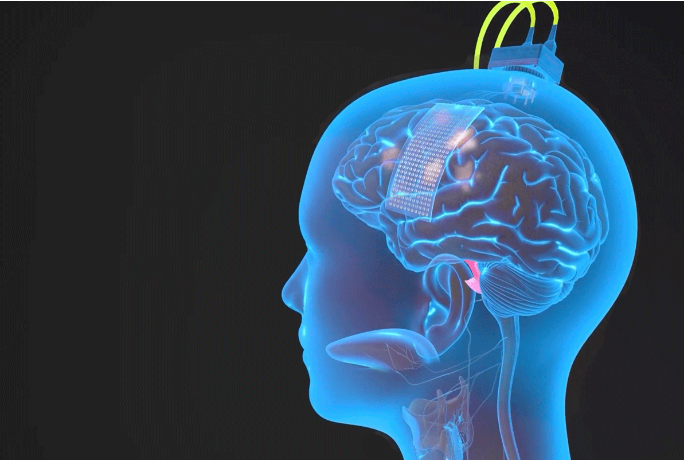The Y Chromosome Decoded & Why it Matters, Does Cardiovascular Risk Start in the Womb?, Brain-Computer Interface Gives a Woman Her Voice Back, Blood Factor Mimics Benefits of Exercise, Research Continues to Demonstrate the Cons of Shiftwork.
The Full Panel meets your TLDR (Too Long; Didn’t Read) needs by delivering the latest medicine & health news in a nutshell. 🥜
The Y chromosome decoded: Here's why it matters! 🧬

Gist: For the first time, scientists have fully sequenced the Y chromosome, filling a significant gap in our understanding of human genetics. This breakthrough, published in the journal Nature, was achieved by the Telomere-to-Telomere (T2T) Consortium, an international group of 100 scientists. Previously, more than half of the Y chromosome's sequences were unknown due to its complexity and repetitive nature.
Nitty-Gritty: The Y chromosome is crucial for understanding male-specific health issues like infertility. Kenneth Walsh, a biochemistry and molecular genetics professor, notes that the Y chromosome is also significant for overall male health and longevity, as it contains genes that prevent cancer and cardiovascular disease. As men age, they often lose the Y chromosome in certain cells, a phenomenon linked to increased risks of bladder cancer and heart disease. This new sequencing may offer deeper insights into these health risks.
Sequencing the Y chromosome was challenging due to its repetitive DNA sequences, which make up more than 30 million of its 62.5 million base pairs. New "long-read" sequencing technology and advanced computational methods helped researchers navigate this complexity. The team also assembled Y chromosomes from 43 males across 21 world populations to capture its genetic variation.
Big Picture: This achievement allows for the inclusion of the full Y chromosome in future studies, offering a more comprehensive view of male health and disease. The new sequence adds over 30 million base pairs to the human reference genome and supports more equitable and inclusive research by incorporating a "pangenome" that represents diverse populations.
Original source: here.
Does cardiovascular disease risk start in the womb? 👶🏼

Gist: Research emphasizes the vital role of a woman's heart health before pregnancy in determining both maternal well-being and that of the future children. Factors like physical conditions, environment, and early life experiences shape a woman’s cardiovascular health, which in turn directly impacts pregnancy outcomes and the health of her children.
Nitty-Gritty: Poor pre-pregnancy heart health is linked to complications like preterm birth, high blood pressure, and gestational diabetes. These complications not only affect the mother but also raise the risk of cardiovascular diseases in the children. For example, being born preterm increases a child's risk of heart disease by 53% by the age of 43.
Big Picture: This issue is not just individual but intergenerational, affecting entire communities. People from diverse racial and ethnic backgrounds are disproportionately affected by these complications, underscoring the need for targeted interventions. Additionally, psychological factors like stress and resilience also play a significant role. Public health interventions are especially needed for women from marginalized groups who may lack access to healthcare and who face chronic stressors like discrimination and poverty.
Original source: here.
How a brain-computer interface gave a woman her voice back 🗣️

Gist: Researchers from UC San Francisco and UC Berkeley have developed a groundbreaking brain-computer interface (BCI) that allowed a Canadian woman with severe paralysis due to a brainstem stroke to communicate through a digital avatar. This marks the first time that either speech or facial expressions have been generated from brain signals. The system decodes these signals into text at a rate of nearly 80 words per minute, far surpassing existing commercial technologies.
Nitty-Gritty: Led by Edward Chang, MD, who has been researching BCIs for over a decade, the team implanted a thin rectangle of 253 electrodes onto areas of the woman's brain critical for speech. These electrodes captured signals intended for her muscles responsible for speech and facial expression. Through weeks of training, they taught artificial intelligence algorithms to recognize her specific brain signals for speech by using a phoneme-based approach (i.e., sounds that make up language), improving accuracy and speed.
The voice for the digital avatar was personalized using her voice recordings from her wedding. Facial expressions on the avatar were animated through a specialized software by Speech Graphics, offering a holistic approach to communication, not just speech.
Big Picture: The team aims for FDA approval and is also working on a wireless version to enhance user independence. "When the subject first used this system to speak and move the avatar's face in tandem, I knew that this was going to be something that would have a real impact," said Kaylo Littlejohn, a graduate student involved in the project. The advancement offers a transformative solution for patients, potentially enabling more natural and fast-paced conversations.
Original source: here.
Blood factor mimics brain benefits seen in exercise 🏃🏼♂️🏃🏻🏃🏽♀️

Gist: Researchers from the University of Queensland's Queensland Brain Institute have made a breakthrough discovery that could have significant implications for cognitive health, particularly among the elderly and those with mobility issues. Dr. Odette Leiter and Dr. Tara Walker led a team that found that an injection of a specific blood factor can mimic the brain benefits typically seen from exercise.
Nitty-Gritty: They focused on platelets, the tiny blood cells crucial for clotting, which secrete a protein rejuvenating neurons in aged mice in a manner similar to exercise. The key component is called an "exerkine" known as CXCL4/Platelet factor 4 or PF4. It is released into the bloodstream from platelets during exercise, PF4 was found to induce regenerative and cognitive improvements when injected into aged mice.
Big Picture: This research opens a promising avenue for drug development aimed at enhancing cognition and counteracting age-related cognitive decline. The team plans to test the response in mice with Alzheimer's disease as a next step towards human trials. Dr. Walker emphasized that while the findings are promising, they aren't a substitute for exercise. However, for individuals who are very elderly, or have had a brain injury, stroke, or other mobility issues that make exercise difficult, this could offer a new way to improve cognition.
Original source: here.
More evidence that rotating shiftwork is not without risks...

Gist: A recent study from York University reveals that working night or rotating shifts could harm memory and thinking abilities in middle-aged and older adults. Published in the journal PLOS ONE, the study analyzed data from nearly 50,000 adults who had jobs outside the conventional 9 a.m. to 5 p.m. timeframe. Participants provided information about their work schedules and took cognitive function tests.
Nitty-Gritty: Interestingly, 21% of the participants reported some experience with shift work in their careers. Those who were currently working night shifts or had predominantly worked night shifts in their longest-held job showed higher rates of cognitive impairment compared to people who only worked daytime shifts. Specifically, night shift work was linked to weaker memory, and rotating shift work was tied to impaired executive function, which involves skills like problem-solving and multi-tasking.
Big Picture: The researchers suggest that disrupting our natural sleep patterns due to shift work could negatively affect brain function as we age. While the study indicates a possible connection between shift work and cognitive decline, it also calls for more research to understand the underlying mechanisms and confirm the findings. The authors speculate that the disruption of natural circadian rhythms could contribute to the deterioration of cognitive functions, but further studies are needed to confirm this hypothesis.
Original source: here.
Interested in previous newsletters or other articles we’ve published? Check them out here at: thefullpanel.com
Got a question for us? Suggestions for content you’d like to see? Feedback? E-mail us at: hello@mail.thefullpanel.com
